
2023 NW Fall Buck Hunt Forecast: Best Oregon, Washington, Idaho Prospects
Deer managers and biologists at the Washington and Oregon Departments of Fish and Wildlife provide their thoughts on this season’s blacktail, mule deer and whitetail prospects.
By MD Johnson
Sometimes you just have to put people on the spot. You just need to flat-out ask ’em, “So, Mr./Mrs. X, how’s this or that going to work out? Look in that crystal ball, which I’m damn sure you have all shined up and pretty, and let me know what to expect.” Yeah, sometimes you just have to ask.
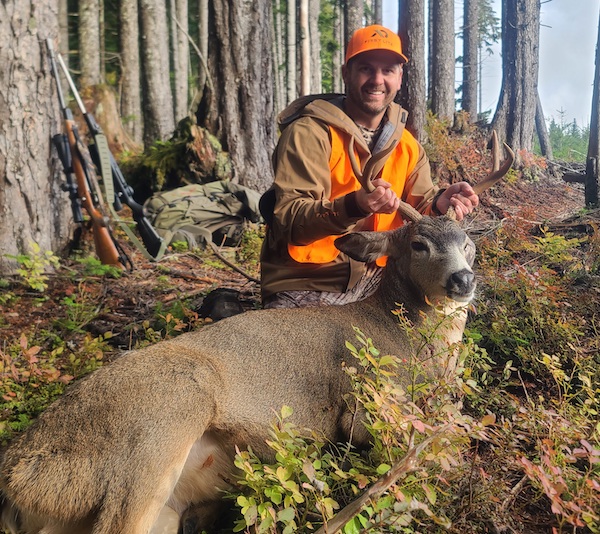
And so it goes every fall in my world with state and federal fisheries, waterfowl, upland bird and big game biologists from around the nation. I call, introduce myself, and go straight into the aforementioned crystal ball. This month, I’ve called upon the powers of the mystical orb, along with the keepers of said orb, to let us all know what to expect once big game seasons in the Pacific Northwest get into full swing. Blacktails? Mule deer? Whitetail? And let’s not forget a small glimpse at elk.
So, without further ado, I give you, straight from the buck and bull biologists’ mouths, an in-depth look into Washington and Oregon’s big game outlooks for this season
It took me a few minutes to realize, though this was my first conversation with Kyle, that I’d had the pleasure of speaking on several occasions with his talented wife Sarah, who currently serves as the small game/upland bird/furbearer specialist for the Washington Department of Fish and Wildlife. But I digress. Garrison, Kyle that is, currently is WDFW’s ungulate section manager, which means he “oversees the statewide coordination that surrounds ungulate monitoring and harvest management, which includes deer and elk, as well as mountain goats, sheep, moose, and we sprinkle a little pronghorn antelope in there with that as well.”
He’s been with the agency since 2016 in various roles in the world of ungulate management; current position since December 2022. Originally from Big Sky Country, Garrison has a degree in wildlife biology from the University of Montana, and a master’s in desert bighorn sheep ecology from New Mexico State University.
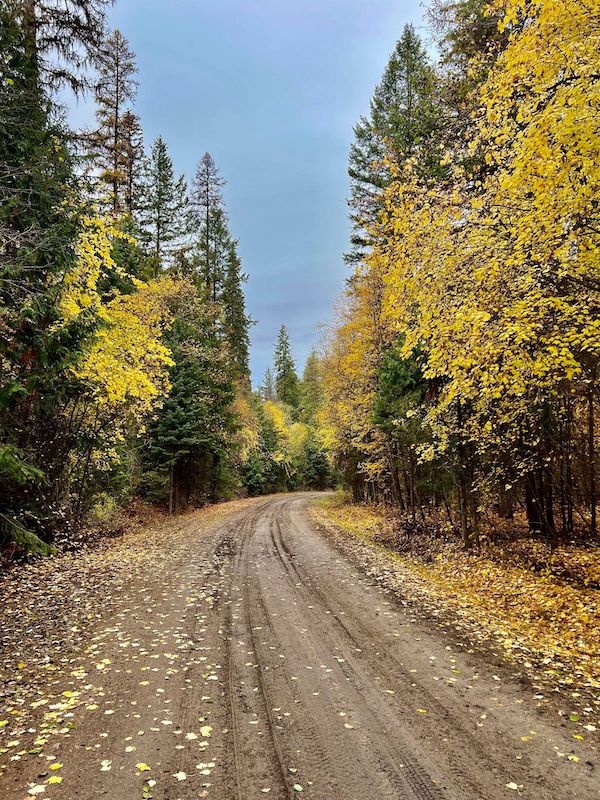
MD Johnson Western Washington blacktail deer, Kyle. Good news/bad news?
Kyle Garrison With blacktails, it tends to be more on the good-news side. Blacktail deer are really consistent in their harvest, which would indicate good consistency in the population. We tend to harvest 9,000 to a little over 10,000 blacktail deer a year across the board, and that tends to indicate stability. Of course, all deer – all ungulates – populations fluctuate. Maybe you have a bad winter. Or intense drought. But overall, blacktail deer numbers have been very reliable.
One of the things that separates Westside from Eastside hunting is we (Westside) have that “escape terrain” – that escape cover – where you can’t necessarily see for miles and miles. That cover that (blacktails) have, along with the heavily forested landscape, allows the deer to have a little more chance to escape. You might have to work a little harder for them, but that’s also why we can provide the opportunity we can for them.
REGIONAL DEER OUTLOOKS
Each fall, Northwest wildlife biologists publish their big game season prospects. Here’s a glance at some of the more popular deer hunting areas in Washington, Oregon and Idaho.
WASHINGTON
Columbia Gorge Hunters might want to work the region’s west end and its more stable blacktail population more so than its middle and eastern sections and its mule deer. Biologists are seeing a slight decrease in the latter herd’s numbers, and what’s more, this summer saw some 58,470 acres of Western Pacific Timber lands west of Highway 97 suddenly removed from the state Private Lands Access program, a big loss. Some of the region’s best blacktail hunting here occurs during November’s four-day late hunt, when one-third of all bucks are taken, biologists say.
Greater Cowlitz Basin Blacktail hunting “should again be good” in Western Washington’s top deer region. Lincoln, Winston and Coweeman Units produce the district’s highest buck kills per square mile, from .81 to 1.22 animals.
MDJ Despite continued human population growth all throughout Western Washington, Kyle, the blacktail populations I’m seeing on a daily basis seem to be doing extremely well. Lots of healthy-looking mama deer, many with twins this summer. Any reasons why so good?
KG Blacktails are a very adaptable species. They don’t move a lot, and basically live where they were born. So, if they were born into an area with roads and traffic and people, they figure out when hunting season is. But it’s their day-to-day life, and they adapt and do just fine. That’s part of it. And while I hesitate to say development and land-use conversion is a “nonfactor” – it certainly is a factor – I do think (blacktails) are able to adapt pretty well, depending on what that land conversion is. It’s a complex dynamic between the modified landscape and the way the animals react, so it’s tough to have hard-and-fast rules. But in general, blacktail deer, like whitetail deer in many ways, are pretty adaptable. And sometimes, they’re a nuisance.
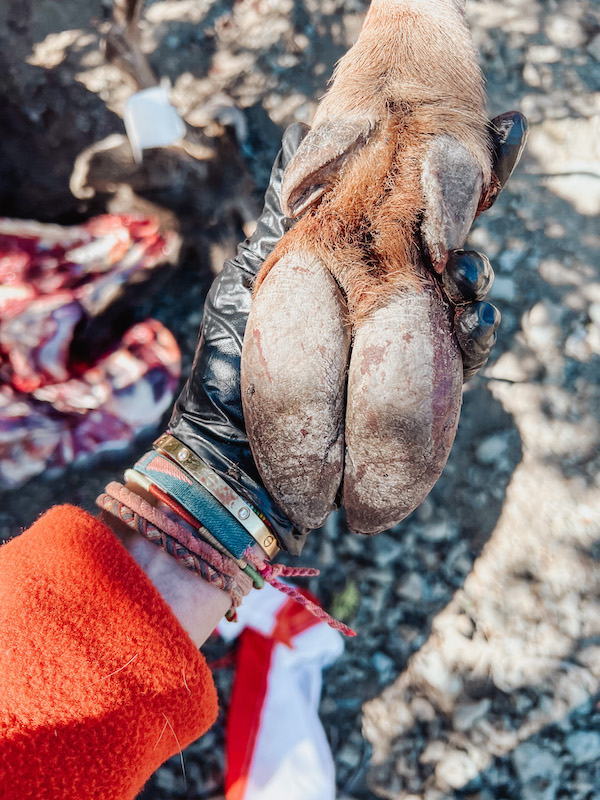
MDJ Eastern Washington’s whitetail population doing well?
KG So this is a good news/bad news situation. The good news is that whitetail deer are one of the species that can have simply amazing population growth. Their ability to twin and be successful at twinning when the conditions are right means they can grow a population pretty quickly. Unfortunately, though, in 2021 we had a fairly large and extensive hemorrhagic (epizootic hemorrhagic disease, or EHD) outbreak, along with some “blue tongue.” And that had a big impact on those whitetail populations out east. Whitetails tend to be a little more susceptible to those hemorrhagic diseases in terms of mortality. Thousands of reports turned up of sick or dead deer, and that (event) certainly showed up in our harvest. But the good news, again, is that whitetails are able to rebound rather quickly.
Northeast Harvest in the state’s whitetail heartland is expected to remain “below average” this fall as a result of 2021’s hemorrhagic disease outbreak, but the region’s herd has been favored by two mild winters and wet springs since then, providing the groceries for this highly productive species to bounce back sooner rather than later. Days needed per rifle buck killed fell last fall in some northern units – Douglas, Selkirk – but continued to rise in Huckleberry and 49 Degrees North.
State managers are also continuing expanded monitoring for chronic wasting disease here and elsewhere in the far eastern tier of Washington via highwayside check stations, a self-service kiosk in Colville and by appointment. To further encourage hunters to get their deer or elk checked for the always-fatal disease, those who submit samples will be put in for a drawing for 100 multiseason deer tags, courtesy of the Washington Chapter of Backcountry Hunters and Anglers.
Palouse and Channeled Scablands Whitetail numbers are still down “significantly” due to hemorrhagic disease, while a 2021 drought likely impacted mule deer fawn survival that will come home to roost this fall in terms of legal buck numbers. The good news is that days needed per kill largely fell last season, and while that could’ve just been due to fewer hunters afield in this relatively wide-open landscape competing for the same bucks, it will be interesting to see if that good trend continues this fall.
Blue Mountains Foothills Don’t hold your breath, but biologists are forecasting that deer harvest will “marginally improve” this fall, thanks in part to an easier winter and good spring. To account for environmental conditions and disease losses over recent years, they’ve been adjusting hunting opportunities and “anticipate seeing some recovery now that we are two years post-hemorrhagic disease outbreak that impacted both our white-tailed and mule deer herds.”
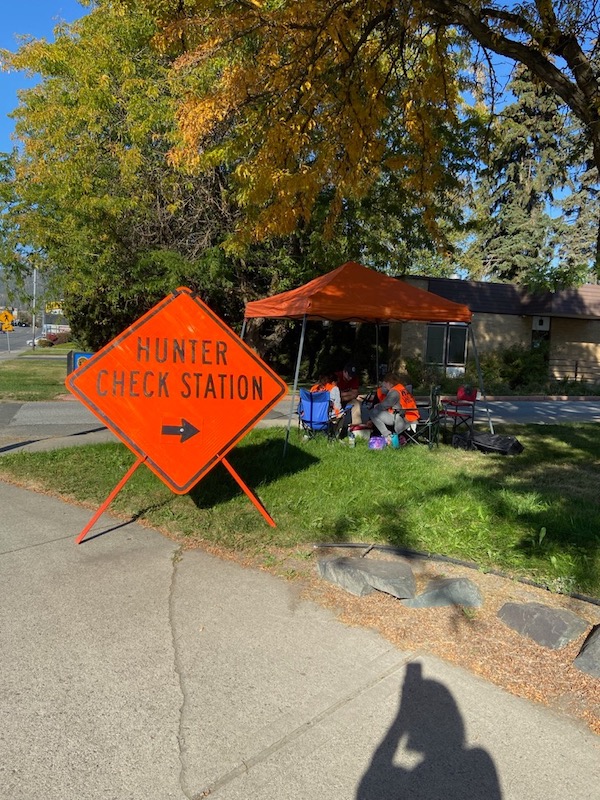
So, what I would expect to see with whitetail deer is that we’re poised to see the population doing well into the future. Growing. We might not see a big uptick during the 2023 license year because those fawns produced in the past couple years aren’t going to be legal bucks, but as we move forward and barring any unforeseen environmental extremities, we should be optimistic about having good whitetail deer opportunities, not only in the northeast part of the state, but in other (parts of their range) as well.
MDJ So, Kyle, same question, but this time concerning Washington’s mule deer population. Good news? Bad news?
KG Mule deer aren’t immune to hemorrhagic disease. They can be a little more robust to it, but we still had areas where there was loss, especially in far Eastern Washington, or Region 1 – Districts 1, 2 and 3. We know we had some direct losses due to radio collar (tracking) loss. That played a role. Mule deer in the long run have experienced declines across the West. In Washington, the situation has a little more “nuance.” There are areas (and times here) when mule deer were doing very well. And then we had times when mule deer appeared to be doing poorly, and we documented declines, especially during the past four or five years.
Okanogan County District 6 biologists say that given slightly below average fawn recruitment last year, they expect a “modest” decline in the number of 21/2-year-old bucks – which typically have a third point on at least one side, making them legal – on the landscape this fall.On the flip side, last December’s posthunt ratio of 29 bucks for every 100 does means that there’s “a good chance to encounter older bucks this season,” the bios’ add. That is, if the deer come down from the heights (or dare to venture off private lands).
“Overall, total general season harvest and success rates are anticipated to be a little below the five-year averages, but the average age of harvested animals may be up slightly,” they forecast.
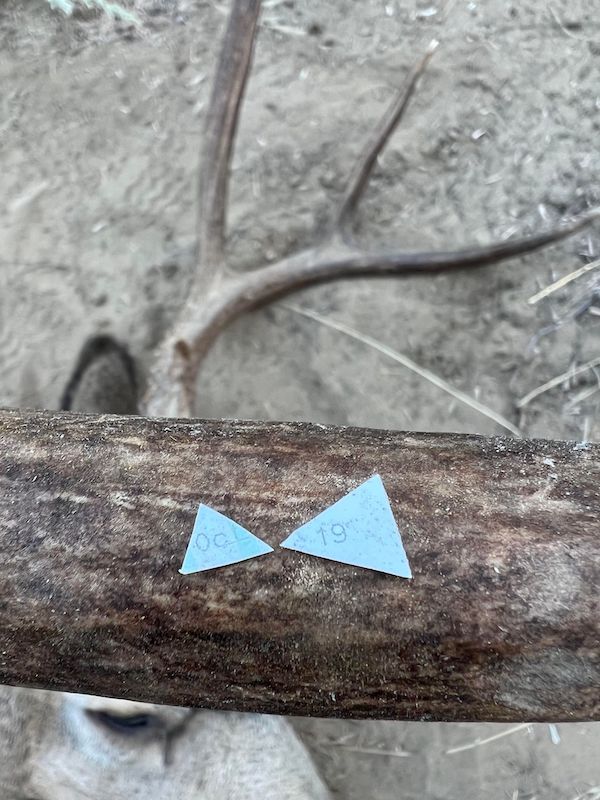
There are a lot of factors that play a role in the dynamics of mule deer, (but) in the long term, you often see those environmental conditions being a primarily driver in the (population) fluctuation. As a firefighter, MD, you know the intense fires we’ve had in Northcentral Washington over the past several years. So we have these fires that create direct and immediate impacts, and in some instances may have killed some deer they were so large, fast-moving and intense. But THEN, the good news there is we’re poised to have really good forage conditions. And in a lot of our management zones (with) mule deer, our biologists are saying, “Yeah, we had some bad years there in 2019 and 2020 and 2021. We weren’t doing as well, but now we’re seeing really promising fawn-to-adult doe ratios.”
Similar to whitetail deer, we’re going into 2023 and I would expect similar hunting conditions as 2022, which is to say perhaps a bit more muted than the “glory days.” The last highest harvest we had was 2016, and while I wouldn’t expect anything like that, I would expect similar (to 2022). Moving forward and assuming all things equal and staying relatively the same, we’re looking at good productivity. We have good buck-to-doe ratios, so I think we have promise.
Chelan and Douglas Counties Expectations last fall were for increased harvest in these odd-couple counties, but when the dust – hint, hint – settled, deer kill actually dropped by nearly a quarter, probably because of warm temperatures and dry conditions throughout this region and lower hunter numbers, but also due to a declining herd in Douglas County. The dropoff will probably mean more bucks available in Chelan County this season, or at least running around its rugged mountains, and while the postseason buck:doe ratio of 20:100 was above the management goal in ag-heavy Douglas and the fawn:doe ratio of 67:100 was “healthy,” biologists say a 22 percent drop in the herd since 2018 “is cause for concern, particularly when paired with reports of hunters and landowners seeing fewer deer” of late. They say several factors could be in play, “including prolonged drought, severe wildfires, disease, and emigration” to other parts of the Columbia Basin. That has bios considering collaring deer to track their movements as well as figure out why they’re dying.
Now we jump on the Lower Columbia’s Puget Island-to-Westport ferry and take a combination of Highway 30 east and Interstate 5 south to Salem, where we’ll find one Justin Dion of the Oregon Department of Fish and Wildlife. Dion is the assistant wildlife biologist for ODFW’s Game Program, and comes to us armed with both bachelor’s and master’s degrees in wildlife ecology, the former from the University of Maine, the latter from the University of Delaware.
“I’m originally from the East Coast,” Dion told me, “and I’m a transplant out here to Oregon. I’ve been here for going on four years now.”
Like his colleague and Evergreen State counterpart Garrison, Dion is a busy, busy man, especially during the fall of the year; however, he too took a few minutes out of his schedule to talk with Northwest Sportsman on what Oregon big game hunters might see as they set foot afield this month.
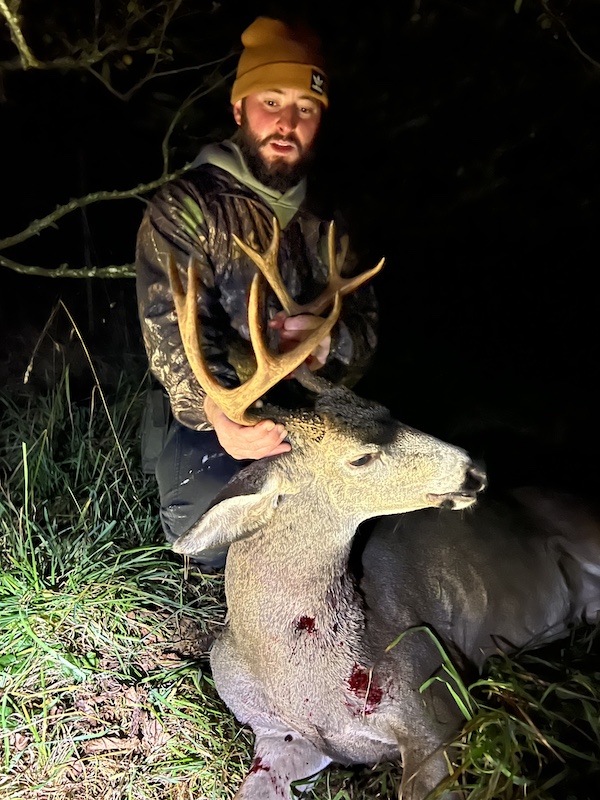
MDJ Western Oregon blacktails, Justin. Good things? Not-so-good things?
(Author’s note: I’d started the ball rolling with Dion by speaking about, as I did to Garrison, the excellent “hatch” – I know, I know – of blacktail fawns we’ve seen locally this summer, and how healthy the does and young bucks seem.)
Justin Dion I’ve heard similar things from people here in Oregon as well, that they’ve been seeing more deer. They’re seeing a lot of young deer. And it could be a number of things. We definitely had a very late spring. A wet spring, meaning there’s plenty of green vegetation out there still, especially in our areas that tend to dry out a little bit more.
But the other thing that could be contributing as well is that we’ve had these wildfires that are burning a lot of the landscape. It’s somewhat a double-edged sword, or a two-part scenario, that is, because on one hand, fire is great for deer. They’re an early successional species and prefer that early habitat, and wildfires produce that. But what we’ve been seeing in the past few years is these really hot fires can get down into the soil and destroy seed banks, preventing things from growing back. It’s an unknown at this point.
As far as deer populations are concerned, our blacktail deer populations are robust. We have plenty of deer out there. Our observed ratios are solid and stable over the vast majority of Western Oregon. That’s just an “observed” ratio, so it’s likely a bit conservative; I mean, there are definitely more deer out there than we’re seeing. Overall, we have a stable very huntable population, with a lot of opportunities.
OREGON
Northwest Biologists report buck escapement coming out of the 2022 season was at the 20:100 does benchmark in the Saddle Mountain and Trask Units and “above average” in the Wilson, with all three expected to offer “decent” prospects this season. The wildcard is that the any legal weapon hunt starts October 7, the absolute latest date possible, and it could result in “an excellent hunting season, as bucks may be rutting during the end of the season,” which wraps up November 10.
Further down the coast, buck ratios look “stable and fair to good” in western portions of the Stott Mountain and Alsea Units, where fawn ratios were also above average, meaning more spikes on the landscape this fall. Northern Siuslaw Unit buck and fawn numbers were below recent averages.
Willamette Valley While fawn ratios were reported as average in the Scappoose Unit, above the Columbia, they were above average in the eastern Trask and northern Santiam Units for a second straight year, which “could result in more young bucks available for harvest in those two areas this hunting season,” say biologists. As for mature buck ratios, they were just below benchmarks in Scappoose and Trask, and “well above” it in Santiam.
Southwest Biologists say rising blacktail numbers appear to have leveled off in the Tioga, Sixes and Powers Units, but are still “fairly high” compared to the early 2000s. In the Dixon, Indigo and Melrose Units, fawn ratios are stable to increasing in recent years. And to the south, buck ratios in the Applegate, Chetco, Evans Creek and Rogue Units, as well as parts of Dixon and Sixes, are “well above benchmark.” In the eastern two-thirds of this agglomeration of units, the deer are more migratory, while those in the western third are typically found throughout all elevations, according to biologists.
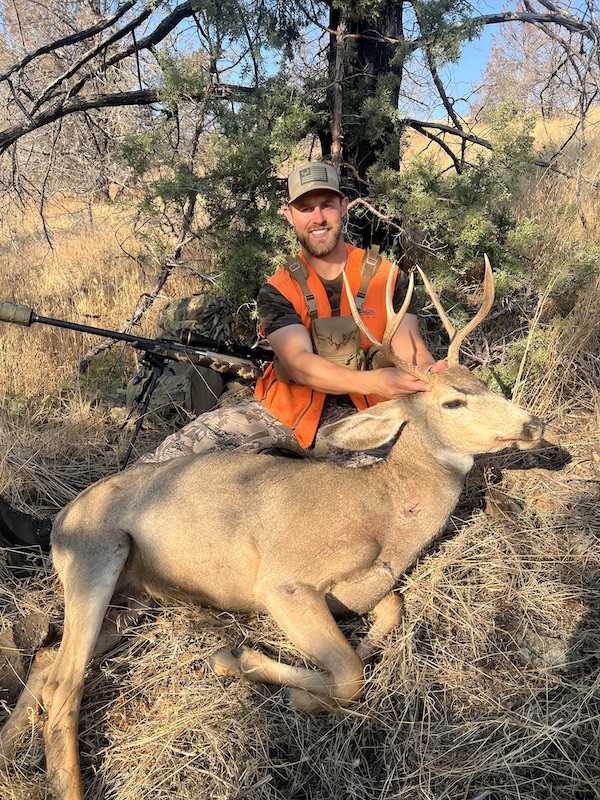
MDJ Let’s shift gears, Justin. Mule deer? Central Oregon? Northeast? Is it unfair of me to ask to discuss these regions collectively, or do we need to talk about them separately?
JD Obviously, we have different units that have different management objectives, but as a species, we manage them as a whole. Generally speaking in Oregon, like most other Western states, mule deer are struggling. We’ve seen steady declines in populations. Our buck ratios tend to be fairly stable in a lot of cases, and we adaptively manage our tag structure to try to keep them at or above those management objectives. But in general, they’re struggling.
Central Oregon The overall buck ratio in the Maury, Ochoco and Grizzly Units of 20:100 is near management objectives, and biologists are excited that fawn counts in the third of those units “rebounded” from an all-time low last year, good news in a year or two. But as stated in the main article, the overall deer population here is depressed, and the same applies in the Paulina and Metolius, upper Deschutes and north Wagontire Units. That said, buck ratios average 24:100 does and a survivable winter left a ration of 63:100 fawns:does, so a few young antlered muleys will be around.
Northeast Biologists report “good” overwinter survival in Baker County, and the same can generally be said for the rest of the region. Unfortunately, it can also be generally said that deer numbers are below objective, though buck ratios are typically above or at goals – units like Catherine Creek, Murderers Creek and eastern Mount Emily, and Northside and Desolation, respectively. Still, fawn survival and ratios are widely reported as depressed and below average, impacting spike numbers this fall. And where whitetail populations are reported “good” on the east side of the Blue Mountains, they’re still struggling to recover from a big disease outbreak on its western flanks.
State biologists will again be manning CWD check stations in Elgin, Baker City, Prineville and Celilo Park on opening weekend of Eastern Oregon’s controlled any legal weapon buck hunt, and they remind hunters that they are required to stop. Appointments can also be made to test game at local ODFW offices, where heads can be dropped off.
MDJ So my obvious next question is, do you know why mule deer are struggling?
JD We do. A lot of these issues are a mosaic; there’s no single issue that’s contributing to their decline, but in this case, we have pretty strong evidence to show that it’s the nutrition that’s out there on the landscape. The problems with invasive species. Not only habitat loss, but degradation as well from grazing, from fire, from encroachment by invasive species like juniper. Replacing of bunchgrasses with annual grasses. You have this landscape that can support a certain amount of deer, and once you start chipping away at that higher quality habitat, you start to lose the amount of deer that the landscape can handle. That’s what we’re seeing – the landscape is below the nutritional level for a lactating female to simply maintain her overall body condition. Predators play their part, but from what we can tell, the nutrition aspect and the habitat quality and quantity (for that matter) aspect is a significant limiting factor.
Author’s note: I found this habitat/nutrition situation incredibly interesting, and asked Dion to continue, me wondering whether this was a new trend or an ongoing one, and if it’s something that’s, sadly, irreversible.
JD There’s a lot of good questions there. You know, this is something that’s been ongoing for a long time. As we started to populate the western part of the United States, it’s people bringing in different kinds of grasses, not only for their cattle, but also to raise for crops. People converting land that was previously natural landscape. It’s not been a recent thing, but it’s been a slow march through time. We had plenty of space out here, speaking of Oregon specifically. We had a lot of landscape to cushion that advance. And (while) I wouldn’t go so far as to say it’s irreversible, the frustrating part – the difficult part about a habitat and landscape issue when you’re talking the scale of Oregon and the range mule deer have in the state – is that it’s not a quick fix. There’s no way to say “OK, this is the issue. We’re going to throw some seed on the ground and it’s going to be fine.”
Columbia Gorge Buck ratios in the Maupin and western Biggs Units are above goals, at 26:- and 21:100, but White River ratios are below par, at 22:100. There, the herd has been hit by hemorrhagic disease, just like their counterparts across the Columbia in Washington’s Klickitat County.
The fact of the matter is the landscape has changed. Not just that the plants aren’t there, but the landscape is changed. With juniper comes water loss. The fire regime has changed, with the annual grasses that tend to burn annually and more quickly. It’s a multistep process to try to turn that landscape into what it used to be for deer, and in many cases, it’s never going to be the same. But we can turn it back to something that’s more useful for them, and then the name of the game is quantity. If you can’t get it back to the natural high-quality summer or winter range that it was, then you want to turn as much of it as you can into good summer or winter range.
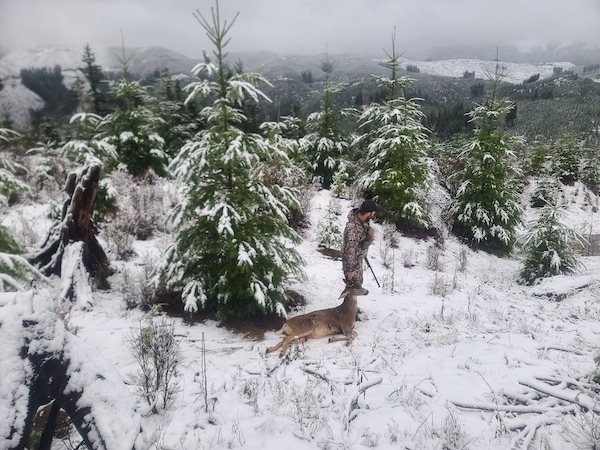
IDAHO
Panhandle “Signs are encouraging” that the whitetail harvest will bounce back after 2022’s “sharp decline,” which followed disease outbreaks and the bursting of the pandemic participation bubble. Biologists say hunters can “expect to find stronger numbers of whitetails in and around the Clearwater Region, but will likely find fewer deer in lower-elevation areas.” Whitetails are also increasing along the Snake and Salmon Rivers, while the Panhandle “saw good overwinter survival of fawns and adults.”
Boise Unit 39, sitting above Idaho’s capital city, saw “severely reduced” fawn recruitment, and that means what’s billed as the state’s most popular and productive mule deer hunt will produce fewer spikes and two-points, though mature buck numbers may be similar to recent seasons.
Owyhees And along the Oregon border, good range conditions back in summer 2022 are expected to yield more legal bucks this fall compared to recent years.
